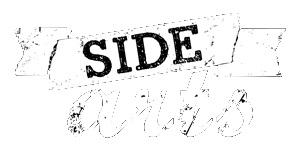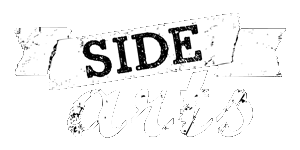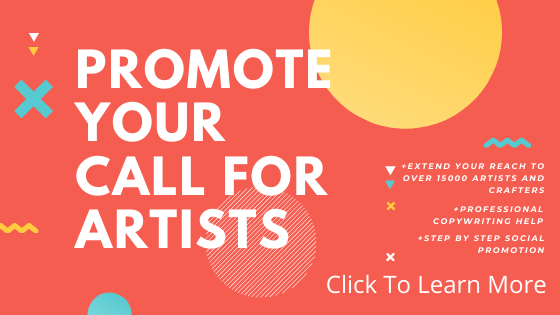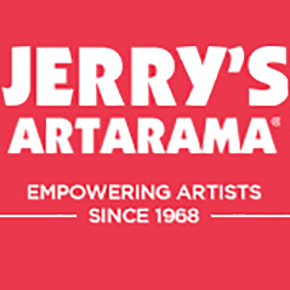How To Write A Call For Artists [The Only Guide You’ll Ever Need]
The most important thing to keep in mind when writing and promoting a call for artists is to be clear, concise, and provide facts and other quantitative data. Artists want to know the specific benefits they receive from participating in the opportunity.
How to Write a Call For Artists
- Plan your calls for artists in advance
- Plan your promotion strategy
- Name your opportunity
- Decide on tense and readability
- Describe the opportunity
- Provide benefits
- Make the call to action clear
- Add an image
- Provide contact information
- Add supplemental materials
1. Plan Your Calls For Artists In Advance
There are a number of questions you may want to think about before launching a call for artists. What is the purpose of your call for artists? Who is your audience? What do you want to achieve? Where will it be held? When will it be? What are the associated costs?
More calls for artists are promoted in January and February than in any other months. If you have any downtime over the holidays, then it is a good idea to start drafting your new listings.
Have you planned your call for artists schedule for the year? Think about how many you will offer, when, and what themes. Create a content calendar to plan out your promotion strategy.
Calls for artists typically include:
- Exhibitions – artwork shows featuring selected artists
- Competitions – awards for themed art contests
- Vendor events – art fairs and craft shows
- Residencies – remote live-in spaces for creating art
- Requests for proposals – paid art projects
If you need some ideas, click here to browse our archives for over 500 call for artists samples!
2. Plan Your Promotion Strategy
Announcing and publish your calls for artists between three months and one month in advance of the deadline. Artists will apply either right away or last minute, giving them enough time to think it through is critical. Posting at least one month in advance is beneficial for your online presence. Over three months, your listing will be indexed by Google and given the necessary time for your followers to share and repost.
Plan to make announcements on other channels between the first announcement and the deadline. Artists find out about opportunities through a variety of channels and are often loyal to only one or two. It is important to space out the announcements. That way, you are receiving a regular influx of new participants over a period of time and have time to interact with propspective participants. Make one more push through each channel during the last four weeks to catch the stragglers.
There are some exceptions when you may want to announce and publish a year in advance. These include residencies that require substantial planning prior to participating and popular annual events which fill far in advance.
3. Name Your Opportunity
A description of the opportunity should be in the name. Avoid generic names like, “call for artists,” “juried exhibition,” and “art fair.” There should always be a theme, topic, medium, or style. Artists want to be able to quickly decide if their artwork is applicable. This helps participants self select into applying.
4. Decide On Tense and Readability
When publishing on your own website, use first person tense. For example, “We’re excited to announce this year’s art fair!”
If you are issuing a press release or submitting content for promotion on a third party site, then use third person tense. When published on other’s sites, then it will appear that that service, rather than your organization, is providing the opportunity. Although we would love to take credit for all your hard work, it’s best that it stay with you!
Avoid duplicate information in the listing. Redundancy doesn’t add any value. It is more important to include more unique information than you think is necessary than less. The more well-thought out the listing seems to the artist, the more likely it is that they will click through and apply.
When publishing on third party sites, provide unique information about the opportunity. Rephrase the copy for your listing if the same phrasing is used elsewhere online. Unique copy increases the likelihood that your opportunity will appear in search results. Duplicate copy on multiple websites lowers how often it is shown.
5. Describe the Opportunity
Include the location (city, state, and/or country) and reach (local, regional, national) of your call for artists in the first paragraph of the call for artists description. Artists tend to quickly assess whether the call is relevant to them. If not readily apparent, they often click away rather than scroll and read more. For improved search visibility, have this information in the body of the copy, the tags, and the site’s taxonomy.
In describing the call for artists opportunity or your organization, be cautious of using “fluffy” language. Avoid adjectives such as best, only, or unique. Although it may seem that way locally or even regionally, it is rare that something stands out as exemplary. For example, “the only competition which involves color,” “more exposure than any other,” and “highest sales.”
If the opportunity does stand out, try giving specific facts such as, “Over 10,000 visitors over the course of the weekend,” “reported average art sales of $2,000,” and “awarded top fair by So-and-so Magazine.” Be specific.
If it is a juried event, list the jurors, their titles, and provide bios. Unless a requirement by the juror, keep the bios short – a few sentences at most. Participants don’t require a full life history, every school attended, award earned, and show list.
Once you have a rough draft, use an editing app to help clarify the details. From grammar editing apps to AI platforms, there are a number of low cost options that can greatly improve your content.
Use a bulletted list for the timeline. Consider the following items:
- Application open
- Deadline
- Delivery date
- Jury date
- Opening
- Closing
- Receptions
- Pick up date
Decide on the list of questions in the application.
6. Provide Benefits
This is the most important part of your listing. Use quantitative, rather than qualitative descriptors. Remember that “exposure” is not a benefit. Consider the following questions when listing your opportunity’s benefits (not all will apply):
- Break down the list of the awards and how they will be judged.
- What makes your audience unique? (demographics, income, interests)
- What is the break-down of the prizes?
- How many social followers do you have? What is the distribution of your mailers?
- What is the average buy from an opening reception/over a month’s time?
- Average foot / web traffic over a month?
- Do you partner with any other organizations to increase traffic?
- What other events in the area are occurring during the exhibition month which may increase traffic (and by how much)?
- Are there any notable attendees?
- Who is your collector base and how large (who are your established VIPs and do they receive a preview)?
- What do you do to follow up with the artists after the exhibition?
- What’s your customer/client service model?
- Do you offer additional services to the participant while they are participating?
We can’t stress this enough: Artists don’t work for free.
7. Make The Call To Action Clear
The call to action is what you want a reader to do. Often, this appears in the form of submitting an application or registering for an event. When submitting the link to the application / registration page, provide the most direct URL. Provide a direct link even if it is not to your website, for example to a Google Form, CaFE, or other form site. The more links the artists have to click to get through to get to the application process, the fewer artists will apply. Side Arts will include a link to your website in the listing under the about section.
Make sure your application / registration landing page is up to date. Check that the links work and all the dates are correct. It’s a good time to check that all your social links are working, too!
8. Add an Image
Upload a unique image for the opportunity, one that is not published elsewhere on the web. It should be at least 500×500 in order to be scaled correctly for social media. Use jpgs and pngs. Direct facing, smiling people work best. Location shots are good, too. If there are text overlays, keep the words as few as possible and avoid crowding the image. Do not use organizational logos for the image. You may want to use multiple images to break up the copy if the listing has many details.
Again, AI and content generation apps can help you perfect your images that look professional and are scaled appropriately for blog and social media sharing.
9. Provide Contact Information
At minimum, provide a direct contact’s full name and direct email address. Preferably, use an email of a person rather than a general organizational email such as info@ or contact@. Listings with a person’s email address has a 20% higher click-through and application rate. It provides transparency, accountability, and shows a willingness to respond to questions. For the artist, this builds trust.
Provide information about the organization which is hosting the opportunity. This is usually copied from the organization’s about page. Remember to list any supporting or sponsoring organizations, especially if it is a requirement of the sponsorship.
10. Add Supplemental Materials
Depending on the type of opportunity, there are a range of other details that may need to be addressed. These include:
- Application fee structure and reasoning
- Commission structure
- Location maps and images
- Legal considerations
Conclusion
How to write a call for artists? Take your time. Check for grammar and spelling errors. Look up other similar calls for artists for ideas. There is no such thing as a perfect listing. You’ll learn more and develop a process as you do more. Remember that Side Arts’ copywriters are here to help! Our expert team of content marketers can help you craft your listing.
If you need some ideas, click here to browse our archives for over 500 call for artists samples!


![How To Write A Call For Artists [The Only Guide You’ll Ever Need] How To Write A Call For Artists [The Only Guide You’ll Ever Need]](https://sidearts.com/wp-content/uploads/2020/02/How-To-Guide.png)


